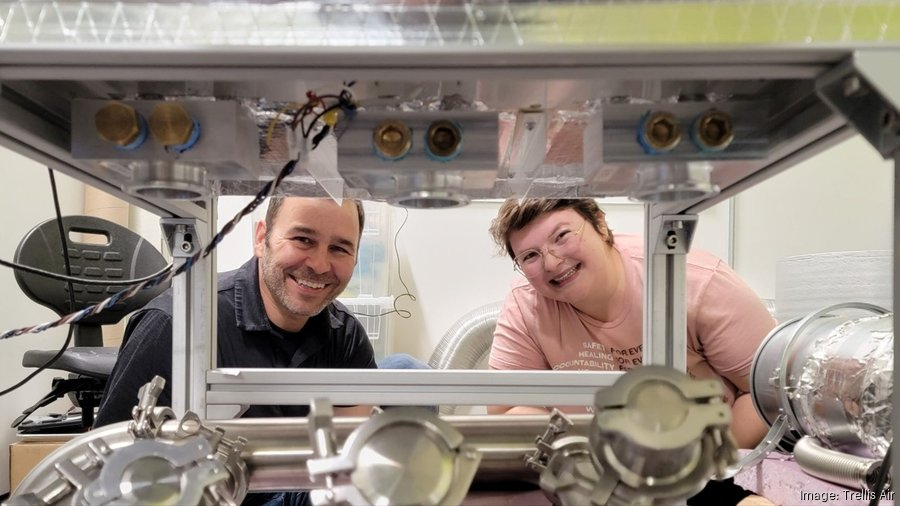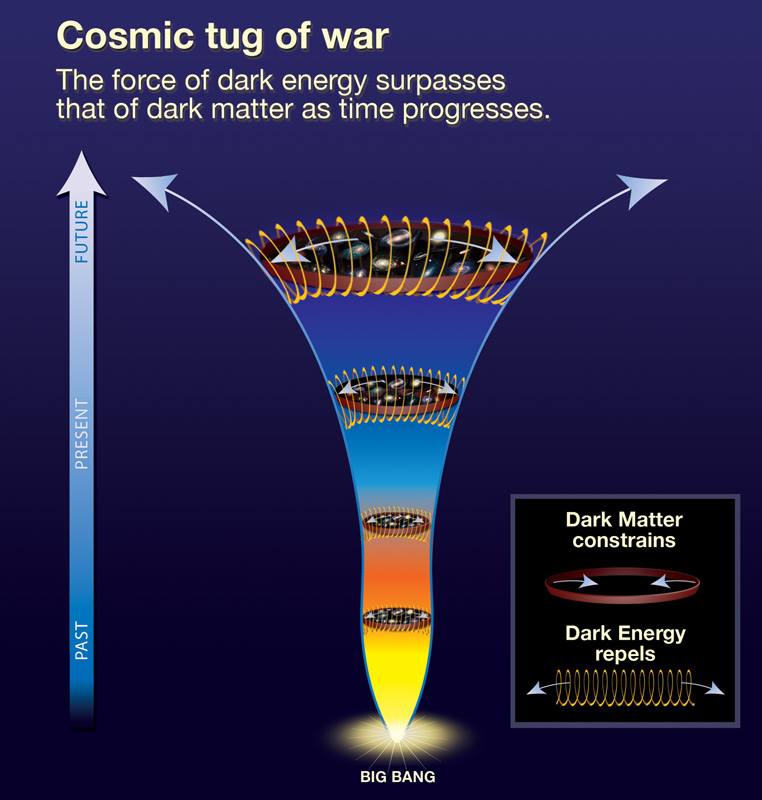Trellis Air technology is revolutionizing the way we think about energy-efficient cooling as the Earth’s climate heats up and demand for air conditioning skyrockets. Developed by an innovative Harvard startup, this breakthrough utilizes a unique membranous system that mimics a coffee filter, enabling it to remove moisture from the air more efficiently than traditional cooling systems. By employing advanced membrane dehumidification techniques, Trellis Air not only reduces energy consumption but also addresses a significant contributor to global greenhouse gas emissions. With air conditioning responsible for an alarming 4% of these emissions, this air conditioning innovation is poised to become a critical climate change solution. As we look towards a hotter future, Trellis Air represents a hopeful shift towards sustainable cooling technology that promises to lessen our environmental footprint while keeping our indoor spaces comfortable.
Introducing Trellis Air’s pioneering approach to climate control, this innovative method serves as a game-changer in how we manage indoor temperatures amid rising global temperatures. The technology harnesses a sophisticated, membrane-based system for dehumidification that significantly lowers energy usage compared to conventional air conditioning methods. With a focus on sustainable practices, this startup born out of Harvard is setting the stage for a new era of air cooling solutions aimed at tackling the pressing issues of energy efficiency and climate impact. By redefining the parameters of moisture extraction and air conditioning, this advancement may well emerge as a leading answer to the demands imposed by our changing environment. In essence, Trellis Air technology stands as a beacon of progress in the quest for eco-friendly air management techniques.
Revolutionizing Air Conditioning: The Trellis Air Technology
The introduction of Trellis Air technology marks a significant shift in air conditioning innovation. Traditionally, air conditioning systems have relied heavily on vapor-compression methods, utilizing refrigerants that not only consume a large amount of energy but also contribute to greenhouse gas emissions. Unlike standard units, which operate much like oversized dehumidifiers with high energy costs, Trellis Air proposes an innovative approach. It employs a novel membrane to separate moisture from air, akin to using a coffee filter, drastically reducing energy consumption and increasing efficiency.
This innovative membrane dehumidification system addresses the pressing challenge of climate change solutions by providing a more sustainable alternative to traditional air conditioning units. As global temperatures rise and the demand for effective cooling systems is projected to increase by 40% by 2030, the Trellis Air technology emerges as a beacon of hope. Utilizing cutting-edge engineering advancements developed at Harvard University, Trellis Air aims to lessen the environmental impact typically associated with cooling systems while still meeting growing consumer needs.
Understanding Membrane Dehumidification and Its Benefits
Membrane dehumidification represents a groundbreaking methodology in air conditioning, which sets itself apart from conventional cooling techniques. While typical air conditioning systems rely on heavy energy consumption to cool and dehumidify the air, Trellis Air’s approach focuses on an efficient mechanism where water vapor is filtered out without extensive energy needs. The newly developed membranes are constructed to allow for high selectivity of water vapor extraction while maintaining their structural integrity, ensuring a durable solution for both residential and industrial applications.
This energy-efficient cooling method not only minimizes electricity usage but also significantly curtails the carbon emissions typically produced by conventional air conditioning units. As a result, the Trellis Air product presents itself as a desirable option for environmentally conscious consumers looking to embrace sustainability in their living or working spaces. This innovative system has the potential to redefine how we perceive air conditioning and dehumidification, melding environmental responsibility with modern convenience.
Trellis Air and the Battle Against Climate Change
As climate change continues to escalate concerns worldwide, companies like Trellis Air are at the forefront, offering innovative solutions to combat its effects. By revolutionizing the air conditioning industry with its membrane technology, Trellis Air not only addresses the rising energy demands for cooling but also significantly reduces the carbon footprint associated with traditional methods. With air conditioning responsible for approximately 4% of global greenhouse gas emissions, innovations in this sector can contribute substantially to emissions reduction efforts.
Moreover, Trellis Air’s commitment to sustainability aligns with broader climate change initiatives by providing an alternative that supports both energy efficiency and effective cooling. As global temperatures rise, reducing reliance on conventional air conditioning systems becomes imperative. Trellis Air’s system showcases how the marriage of technology and research can yield solutions that not only meet climate change challenges but also resonate with the growing market of energy-conscious consumers.
The Role of Harvard’s Research in Air Conditioning Innovation
Harvard’s integral role in developing Trellis Air technology underscores the significance of academic research in bringing innovative solutions to market. The collaboration among architects and scientists led to the creation of a sophisticated membrane capable of efficiently pulling moisture from the air, a significant breakthrough over previous attempts that failed due to limitations in scalability and selectivity. This partnership exemplifies how interdisciplinary approaches can lead to advancements that have the potential to reshape industries.
The team’s connection to Harvard’s Wyss Institute for Biologically Inspired Engineering and other research groups facilitated crucial funding and support, allowing them to explore and refine this cutting-edge technology. As they prototype and test this system in various environments, the data gathered propels further research and development, demonstrating the enduring impact of university-driven innovation on real-world applications.
Commercialization Pathways for Trellis Air Technology
The pathway to commercializing Trellis Air technology involves exploring various market segments that can benefit from its innovative solutions. Trellis Air aims to replace existing dehumidifiers in homes and industrial applications with its more efficient models, showcasing the system’s energy-efficient cooling capabilities. This initial step could dramatically alter the market landscape, providing better, greener alternatives to outdated systems while capitalizing on the growing demand for sustainable technologies.
Another substantial goal for Trellis Air is integrating its technology with traditional air conditioning units to serve as a pre-drying module. This strategy could enhance the overall efficiency of cooling systems, ultimately leading to reduced energy consumption in residential and commercial settings. By effectively combining Trellis Air’s dehumidification innovation with existing air conditioning technologies, the company positions itself as a pioneer in the quest for climate-friendly solutions amidst growing environmental concerns.
How Trellis Air Tackles Energy Efficiency Challenges
Trellis Air technology is at the forefront of addressing the energy efficiency challenges posed by traditional air conditioning systems. The innovative design of its membrane dehumidifier drastically reduces the energy required to cool and dehumidify air, making it an attractive alternative for those seeking to lower their utility bills. This enhancement in efficiency not only benefits consumers financially but also contributes positively to the environment by curbing the overall energy consumption associated with widespread air conditioning usage.
In light of projections that air conditioning demand will rise dramatically due to increasing global temperatures, these advancements by Trellis Air are timely and critical. By prioritizing energy-efficient cooling solutions, the company is poised to significantly reduce the burden on power grids and offer consumers an environmentally responsible choice. These efficiencies bolster Trellis Air’s mission to provide sustainable, innovative cooling systems that cater to modern demands while aligning with global climate objectives.
Exploring the Potential of Desiccant Systems vs. Trellis Air Technology
In the conversation about energy-efficient cooling, the comparison between traditional desiccant systems and Trellis Air technology provides valuable insight into the future of air conditioning innovations. Desiccant systems often use materials like salt to absorb moisture but can be energy-intensive and less sustainable than desired. On the other hand, Trellis Air’s membrane technology stands out by extracting moisture directly from air without needing the heavy energy loads typical of desiccant systems, thus offering a more modern approach to dehumidification.
By effectively eliminating the limitations associated with desiccant systems, Trellis Air not only enhances efficiency but also reduces the potential for significant greenhouse gas emissions tied to traditional dehumidification methods. This stark contrast highlights the importance of continuous innovation in the HVAC sector, driving the demand for smarter solutions in combating climate change while promoting energy efficiency on a wider scale.
The Future of Energy-Efficient Cooling Solutions
Looking ahead, the future of energy-efficient cooling solutions appears promising, particularly as more consumers and businesses seek to mitigate their carbon footprints. Trellis Air’s innovative approach to air conditioning holds the potential to fundamentally change how buildings are cooled, expanding beyond traditional techniques to embrace more sustainable practices. With an increased emphasis on environmentally friendly technologies, we can anticipate a transformation in the HVAC landscape that prioritizes energy efficiency and climate responsibility.
As Trellis Air continues to develop and refine its membrane technology, the push for greater energy-saving solutions in residential and commercial air conditioning systems will likely follow suit. The advancements in this space can inspire further innovations that not only innovate but also contribute to combating climate change actively. By prioritizing sustainable energy practices, the company represents a significant step toward realizing a future where cooling technologies are both effective and environmentally responsible.
Impact of Trellis Air on Global Greenhouse Gas Emissions
The implications of Trellis Air technology extend far beyond the immediate benefits of improved energy efficiency; they also touch upon the critical issue of global greenhouse gas emissions. Traditional air conditioning systems significantly contribute to emissions, evidenced by their approximate 4% share of global greenhouse gases. By transitioning to Trellis Air’s innovative system, countries can potentially curtail a substantial portion of these emissions associated with cooling needs, aligning with global targets to combat climate change.
This reduction not only emphasizes the urgency of shifting towards cleaner technologies but also showcases the impact of startups like Trellis Air in leading the charge against climate change. The potential widespread adoption of this technology could serve as a catalyst for transforming the HVAC industry while simultaneously fostering a more sustainable future. By focusing on improving air quality and energy efficiency, Trellis Air could set new standards for environmental responsibility in air conditioning.
Frequently Asked Questions
What is Trellis Air technology and how does it contribute to energy-efficient cooling?
Trellis Air technology represents a groundbreaking approach to energy-efficient cooling by utilizing a unique membrane for dehumidification. This innovation allows for the extraction of moisture from the air without relying heavily on traditional refrigerants. By improving cooling efficiency and reducing energy consumption, Trellis Air aims to address the growing demand for air conditioning while minimizing greenhouse gas emissions associated with climate change.
How does Trellis Air’s membrane dehumidification system work?
The Trellis Air system functions similarly to a coffee filter, leveraging its specially designed membrane to separate water vapor from ambient air. This method is more energy-efficient compared to conventional air conditioning systems, which typically rely on vapor-compression technology, thus transforming energy use in building cooling and contributing to more sustainable climate change solutions.
What advantages does Trellis Air technology offer over traditional air conditioning systems?
Trellis Air technology offers significant advantages over traditional air conditioning systems, primarily through its innovative membrane dehumidification approach. By using less energy, it reduces operational costs and greenhouse gas emissions. Additionally, it enhances cooling efficiency, which is crucial as global temperatures rise and the demand for air conditioning increases.
Is Trellis Air a Harvard startup and how is it connected to climate change solutions?
Yes, Trellis Air is a Harvard startup founded through collaborative research at Harvard University. Its mission aligns with climate change solutions by aiming to drastically reduce the energy consumption associated with air conditioning and cooling systems, which currently account for a notable percentage of global greenhouse gas emissions.
What commercial applications are expected for Trellis Air’s cooling technology?
Trellis Air envisions several commercial applications for its innovative technology, including replacing conventional desiccant systems in industrial settings, providing more efficient basement dehumidifiers, and integrating with traditional air conditioning systems as a pre-drying module, which collectively can lead to substantial energy savings and reduced emissions.
How does Trellis Air aim to address the increasing demand for cooling in the face of climate change?
In response to the projected 40 percent increase in air conditioning demand by 2030 due to climate change, Trellis Air aims to provide a more sustainable option. By utilizing its energy-efficient cooling technology, the startup seeks to meet this demand while reducing the environmental impact of cooling systems, thus contributing positively to climate change mitigation efforts.
| Key Point | Details |
|---|---|
| Research Background | Peteris Lazovskis presents the innovative Trellis Air membrane, developed at Harvard. |
| Environmental Concerns | Cooling systems contribute to 4% of global greenhouse gas emissions, significantly more than air travel. |
| Rising Cooling Demand | Cooling demand is expected to increase by up to 40% by 2030 due to climate change. |
| Innovation in Cooling Technology | Trellis Air aims to revolutionize cooling with its novel membrane dehumidification technology. |
| Comparison to Existing Systems | Traditional air conditioners and dehumidifiers require a lot of energy, operating inefficiently. |
| Research Collaboration | The technology was developed through collaboration at Harvard’s engineering and design departments. |
| Membrane Technology Advantage | Trellis Air’s membrane acts like a coffee filter, using less energy and providing stable performance. |
| Commercialization Efforts | The startup plans to replace older systems in various applications, aiming for widespread adoption. |
| Future Prototyping and Testing | Prototypes are tested in real-world settings, ensuring technology efficiency and reliability. |
Summary
Trellis Air technology represents a revolutionary advancement in cooling systems, significantly addressing the escalating demand for efficient air conditioning amid climate change. By introducing a unique membrane-based dehumidification approach, it aims to drastically reduce the energy consumption associated with traditional air conditioning methods. As researchers and entrepreneurs collaborate to optimize this innovative technology, Trellis Air is positioned to not only lead the market but also contribute meaningfully to the reduction of greenhouse gas emissions, offering a sustainable solution to a global challenge.




